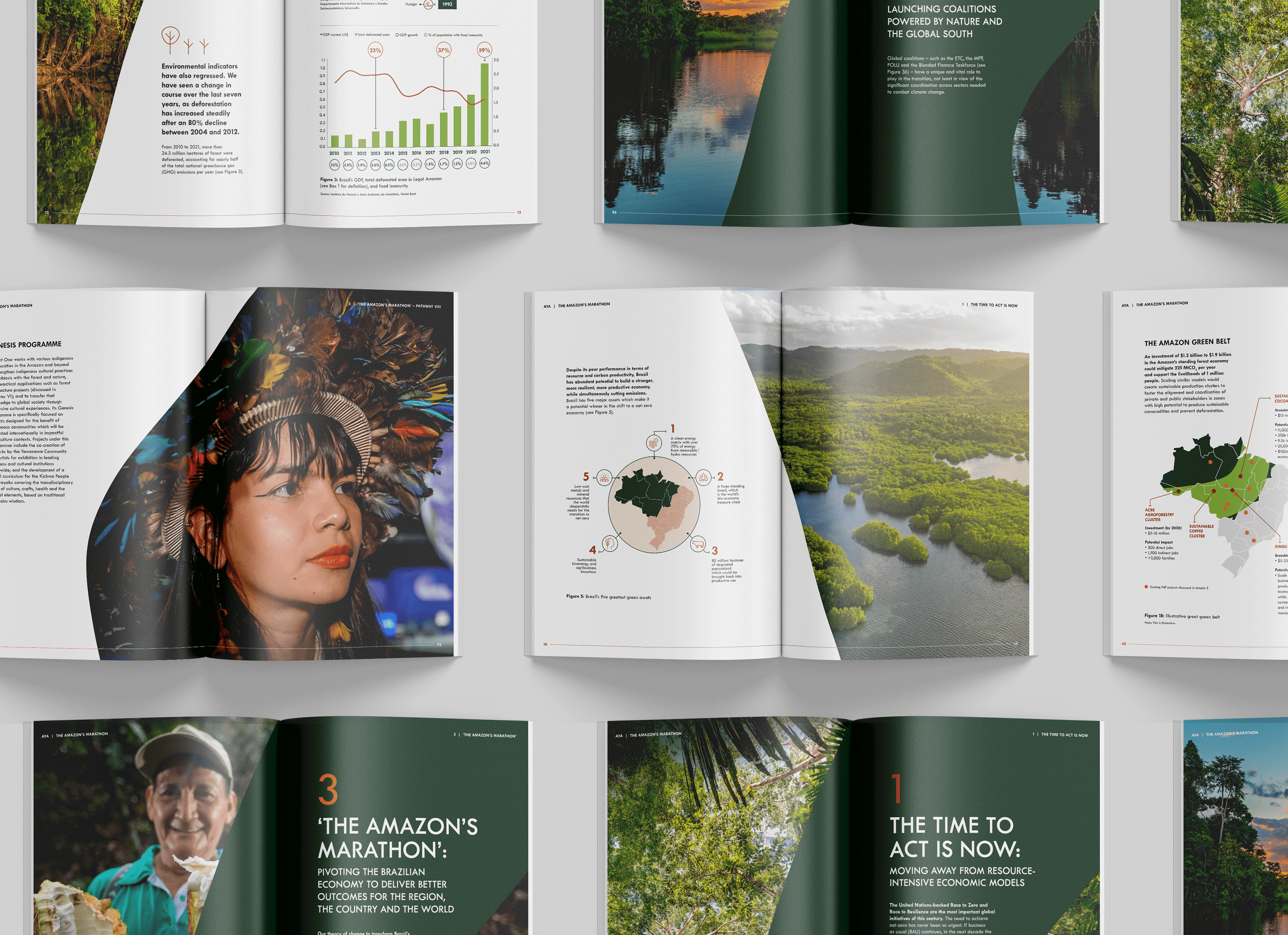Designing a report fit for COP27
We are proud to have partnered with Systemiq - in collaboration with AYA Earth Partners - to design their report: ‘The Amazon’s Marathon: Brazil to lead a low-carbon economy from the Amazon to the world’.
This is an important document which could be a real game-changer for the Amazon and the world. Here’s how we worked across time zones to have it ready in time for its presentation at COP27.
Design: ‘The Amazon’s Marathon’ Report
“We are on a highway to climate hell with our foot still on the accelerator…”
Those were among UN secretary general, António Guterres’s opening words at this year’s COP27 climate change summit.
“[Climate change] is the defining issue of our age. It is the central challenge of our century.”
A stark warning, if ever there was one.
As the COP27 summit continues in Egypt, back home we’re facing daily reminders of the need to cut carbon emissions.
Record temperatures this summer were a direct result of human-caused climate change, with flooding, sea level rises and loss of natural ecosystems all directly impacted by increasing temperatures. At the same time, around the world, Pakistan is experiencing extensive flooding following monsoon rains, while parts of East Africa are struggling through their fifth season of extreme drought.
So sustainability is a big buzzword right now.
With forest loss and damage the cause of around 10% of global warming, a steady increase in the deforestation of the Brazilian Legal Amazon is worrying. In an attempt to emulate the resource-intensive economic model under which China and South Korea had previously thrived, Brazil has suffered, with sustainable economic growth and income distribution proving difficult to achieve.
This has left the country in need of transition to a more resource-efficient, people-centric model.
As ‘the Amazon’s Marathon‘ report points out, the benefits are plentiful, with Brazil potentially providing 1.9 gigatons in carbon surplus to the world by 2050. By following the pathways set out in the development plan, it could become the first major economy to achieve net zero, while at the same time boosting economic growth to the tune of $100-$150 billion additional GDP per year.
The message of the report is clear. We just had to bring it to life.

















































